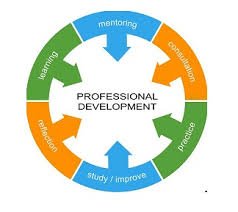Teaching in the Digital Age: Challenges and Innovations
Updated: 17 May 2025
Teaching in the Digital Age: The Opportunities and Innovations
Refinements in technology seem to have transformed the whole education landscape in the 21st century. Now, in the digital era, the processes of educating and learning, as well as accessing and applying knowledge, have changed quite drastically. While the changes are exhilarating, they do come with their own set of challenges. Adapting to these changes requires ingenuity alongside an accurate grasp of the underlying constructs.

The Obstructions during Teaching in the Digital Age

1.The Digital Split
Not every single scholar today possesses technological tools. Learners belonging to lower economic backgrounds may still face challenges like weak internet connections, outdated devices, or even a serene environment to study in at home. The gap can set in motion misleading educational achievement gaps and create problems towards inclusive education.

2.Tech Burnout Along with Increased Screen Usage
Staring at any digital interface for prolonged durations of time can lead to burnout, tired eyes, and decreased focus. Mental fatigue is another common issue now-a-days for both teachers and students as a result of never-ending virtual interactions. To counter this, blending technology with traditional learning will be a good approach to preserving mental peace.

3.Professional Development Discrepancies
No proper training was given to educators, so many of them have to now deal with classrooms that are completely digital. High tech platforms, resolving tech complications, and reshaping class lessons to suit virtual formats all take significant time and effort, which many schools do not support.

4.Student Engagement
Motivating and keeping students engaged is more complicated than ever in a digital setting. Without proper management, active learning can be replaced by content having to be passively consumed. For students to be proponents over their learning, teaching techniques should be tailored to be more personalized and interactive.

5.Data Privacy and Security
The use of online platforms increases, thus, protecting student information has risen to a critical issue. While schools make due with a framework of policies, they also have to make use of ethical and secure tools.

Innovations Transforming Education
While facing these problems, new methods of teaching and learning which can technologies in revolutionizing education are available due to the problems posed.

1.Blended and Hybrid Learning Models
In-person instruction with the integration of digital tools results in more freedom in the pacing and structure of lessons making it more personalized, thus fostering independent learning. This model also meets a variety of learning and pacing preferences which leads to improved student outcomes.

2.Artificial Intelligence (AI) and Personalized Learning
Lessons can be tailored in real time according to a student’s performance through specialized AI platforms. The use of AI customizes education to buff support provided and amplify flexibility given to identify students who are having difficulties at an earlier stage.

3.Gamification Learning and Interactive Learning
Applying game-like components into lectures such as points, badges, and leaderboards serves to improve the student’s willingness to participate. Simulation, interactive quizzes, and collaborative challenge tools are all excellent resources for boosting attendance and retention.

4.Global Classrooms and Collaboration Tools
Students can now work together regardless of their physical locations with the aid of tools such as Zoom, Microsoft Teams, and Google Workspace. These platforms foster global citizenship and education by allowing the integration of guest speakers from different regions or even entire classrooms around the globe.

5.Open Educational Resources (OER)
OER, which offers open digital sharing of educational materials, has especially improved the accessibility of educational resources that are regarded of great quality. Content can be customized, shared, and improved without any restrictions imposed by conventional textbooks which greatly benefits teachers.

Looking Ahead: A Balanced Approach
Navigating successfully in the digital world requires more than just using technology. Teaching and learning in the digital world relies on effective integration of technology with solid educational frameworks, promoting human interactions, and being compassionate and equitable.
Support is needed for educators in the form of adequate resources, ongoing professional development, and time allocated to creative initiatives. On the other hand, students should be equipped with the digital literacy skills necessary to thrive in a globally interconnected environment.
The future holds continuous progression in teaching, but one thing will always stand: education’s extraordinary ability to transform lives when it is inclusive, engaging, and thoughtfully designed.


